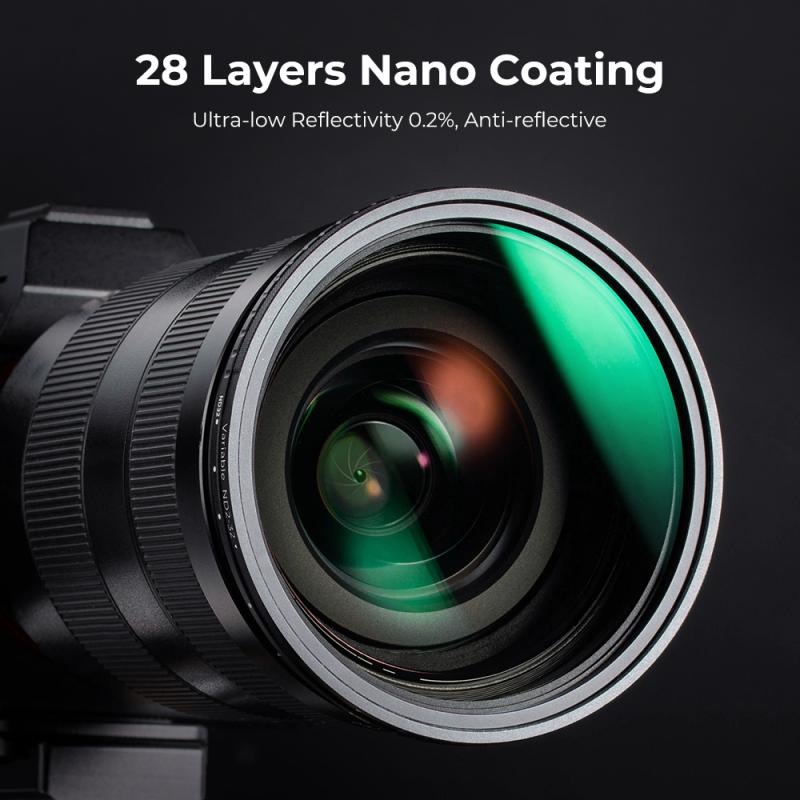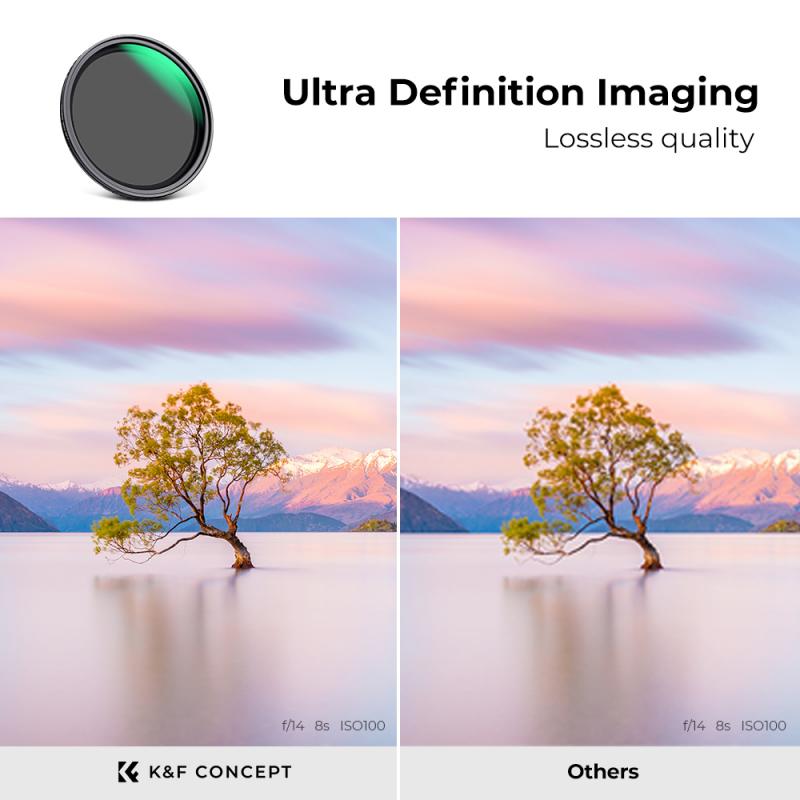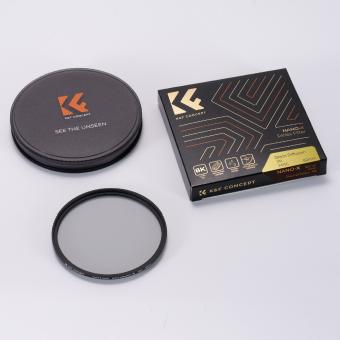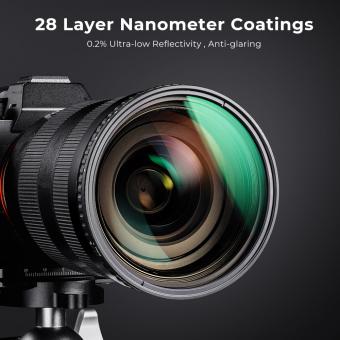What Are Benefits Of Nd Filters ?
ND filters, or neutral density filters, are used in photography and videography to reduce the amount of light entering the camera lens without affecting the color or hue of the image. This allows for greater control over exposure settings and can result in a number of benefits, including:
1. Longer exposure times: ND filters allow for longer exposure times, which can be useful for creating motion blur in waterfalls, rivers, and other moving subjects.
2. Wider apertures: By reducing the amount of light entering the lens, ND filters allow for wider apertures to be used in bright conditions, resulting in shallower depth of field and more creative control over focus.
3. Reduced glare and reflections: ND filters can help reduce glare and reflections in bright conditions, making it easier to capture clear, sharp images.
4. More balanced exposures: ND filters can help balance exposures in high-contrast scenes, such as landscapes with bright skies and dark foregrounds.
Overall, ND filters are a versatile tool for photographers and videographers, allowing for greater creative control over exposure settings and helping to produce high-quality images and videos in a variety of lighting conditions.
1、 Reducing Overexposure in Bright Light
One of the main benefits of ND filters is reducing overexposure in bright light. When shooting in bright sunlight, the camera's aperture and shutter speed may not be enough to properly expose the image without overexposing it. This is where ND filters come in handy. ND filters reduce the amount of light entering the lens, allowing for longer shutter speeds and wider apertures without overexposing the image. This is especially useful for landscape and outdoor photography, where bright sunlight can often be a challenge.
In addition to reducing overexposure, ND filters can also be used to create motion blur effects in images. By using a longer shutter speed, ND filters can create a sense of motion in images, such as blurring waterfalls or creating streaks of light in traffic.
Another benefit of ND filters is their versatility. They come in a range of strengths, from light to heavy, allowing photographers to choose the right filter for the lighting conditions and desired effect. ND filters can also be stacked, allowing for even more control over the amount of light entering the lens.
Finally, ND filters can also improve the overall quality of images by reducing glare and reflections. This is particularly useful when shooting near water or other reflective surfaces.
Overall, ND filters are a valuable tool for photographers looking to control exposure and create unique effects in their images. As technology advances, new types of ND filters are being developed, such as variable ND filters, which offer even more control over exposure.

2、 Allowing for Slower Shutter Speeds
One of the primary benefits of ND filters is that they allow for slower shutter speeds. This is particularly useful in situations where there is too much light, such as when shooting in bright sunlight or when trying to capture a long exposure shot. By reducing the amount of light that enters the camera, ND filters enable photographers to use slower shutter speeds without overexposing the image.
This can be especially useful for landscape photographers who want to capture the movement of water or clouds, or for portrait photographers who want to create a shallow depth of field in bright light. ND filters can also be used to create motion blur in images, which can add a sense of movement and energy to a photograph.
In addition to allowing for slower shutter speeds, ND filters can also help to reduce glare and reflections, which can be particularly useful when shooting near water or other reflective surfaces. They can also help to balance exposure in situations where there is a large difference in brightness between the foreground and background.
Overall, ND filters are an essential tool for any photographer who wants to have greater control over their exposure settings and create more dynamic and creative images. With the latest advancements in filter technology, ND filters are becoming more versatile and easier to use than ever before, making them a must-have accessory for any serious photographer.

3、 Creating Motion Blur in Water and Clouds
What are benefits of ND filters? One of the main benefits of ND filters is that they allow you to control the amount of light that enters your camera lens, which is particularly useful when shooting in bright conditions. This can help you achieve a slower shutter speed, which can be used to create motion blur in water and clouds, as well as other creative effects.
Creating motion blur in water and clouds is a popular technique used by landscape photographers to add a sense of movement and dynamism to their images. By using an ND filter to reduce the amount of light entering the lens, you can achieve a slower shutter speed, which will result in a longer exposure time. This will cause any moving elements in the scene, such as water or clouds, to appear blurred, while stationary elements remain sharp.
The latest point of view on ND filters is that they are an essential tool for any landscape photographer looking to create dynamic and creative images. With the ability to control the amount of light entering the lens, ND filters allow photographers to achieve longer exposure times, which can be used to create a range of effects, from motion blur to silky smooth water. Additionally, ND filters can also be used to balance exposure in high-contrast scenes, allowing you to capture detail in both the highlights and shadows. Overall, ND filters are a versatile and valuable tool for any photographer looking to take their landscape photography to the next level.

4、 Enhancing Colors and Contrast
What are benefits of ND filters? One of the main benefits of ND filters is enhancing colors and contrast in your photos. ND filters reduce the amount of light entering the camera lens, which allows you to use slower shutter speeds and wider apertures without overexposing your image. This can result in more vibrant colors and deeper contrasts, especially in bright outdoor settings.
ND filters can also help you achieve a more professional look in your photos by allowing you to control the depth of field and create a shallow depth of field effect. This can be particularly useful in portrait photography, where you want to blur the background and focus on the subject.
In addition, ND filters can be used to create long exposure effects, such as capturing the movement of water or clouds. This can add a sense of motion and drama to your photos, and create a unique and artistic look.
From a technical standpoint, ND filters can also help prevent lens flare and ghosting, which can occur when shooting in bright sunlight or with strong light sources in the frame.
Overall, ND filters are a versatile and essential tool for any photographer looking to enhance their images and take their photography to the next level. With the latest advancements in filter technology, such as variable ND filters, photographers have even more control and flexibility in their creative process.





























